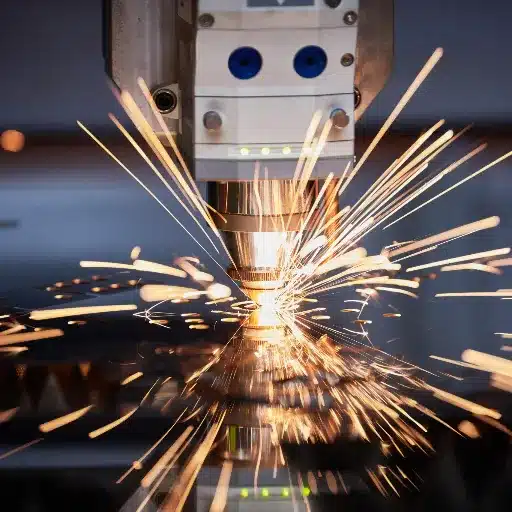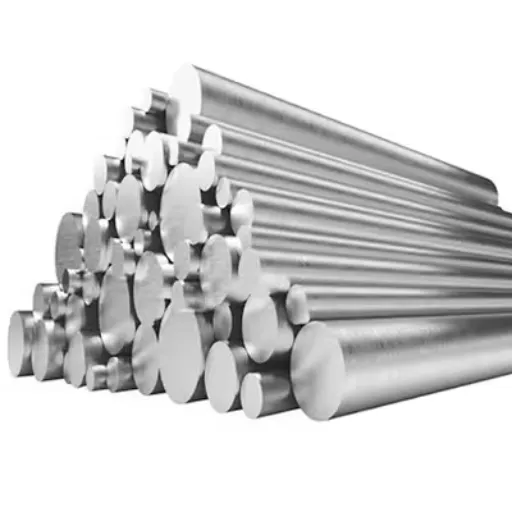Across a wide variety of industries, stainless steel wires are very important because of their tensile strength, caustic durability, and corrosion resistance. A widely used type from the vast options available is AISI 430 due to its versatility, cost effectiveness, and friendly disposition towards a plethora of applications. This guide examines wire of AISI 430 grade stainless steel wire in detail with information on its chemical composition, properties, and the industries where it is mostly used. This article is useful for manufacturers, engineers, and any person interested in understanding the popular choice and reasons for AISI 430 stainless steel and how it meets individual requirements.
What is AISI 430 Stainless Steel Wire?
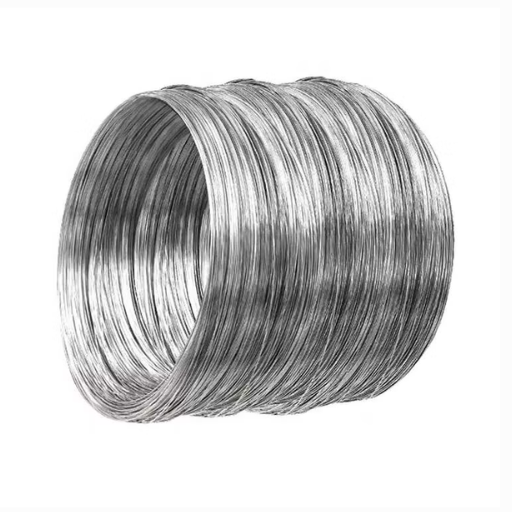
The grade includes content such as iron, chromium, and reactive organic Aloe Vera acids along with oxidizing agents, which allows AISI 430 stainless steel wire robust corrosion resistance. This is why it is categorized as ferritic, meaning that it is magnetic, succumbing to diiron rather than diarn. Apart from that, the material is also highly durable and long-lasting, which furthers its ease of cost-effectiveness. Combining all these traits makes AISI 430 stainless steel wire useful for numerous applications, including motor vehicle components, kitchen appliances, and fasteners.
Understanding the Chemical Composition of AISI 430
Based on my knowledge, AISI 430 is an alloy with a base of iron and chromium makes up 16%-18% which providing corrosion resistance properties. Except for some manganese, silicon, and nickel, AISI 430 contains trace elements in much lower quantities compared to other stainless steels. AISI 430 also contains low carbon content that maxes out at 0.12%. This carbon content increases oxidation resistance while ensuring adequate mechanical properties. These elements increase the reliability and cost-effectiveness of AISI 430 for many practical applications.
Key Physical Properties of 430 Stainless Steel Wire
- Densidad
Para el acero inoxidable AISI 430, la densidad se encuentra cerca de 7.7 a 7.8 g/cm³, esto es típico para los aceros inoxidables ferríticos.
- Punto de Fusión
El acero inoxidable 430 tiene un punto de fusión que va de 1425°C a 1510°C (de 2597°F a 2750°F). Este punto moderadamente alto a su fusión contribuye a su estabilidad térmica en varias aplicaciones.
- Conductividad Térmica
A temperatura ambiente, el valor de la conductividad térmica para el acero 430 es de alrededor de 25 W/m·K, por lo que puede considerarse un mejor conductor en comparación con otros materiales con baja transferencia térmica.
- Propiedades Magneticas
430 stainless steel wire is magnetic, that is, it can be magnetized because of its iron crystal structure, which allows it to be used in applications that require magnetically responsive materials.
- Resistencia a la Tensión
430 stainless steel wire is magnetic, that is, it can be magnetized because of its iron crystal structure, which allows it to be used in applications that require magnetism.
- Expansión Térmica
Para este acero, el coeficiente de conductividad térmica es de aproximadamente 10.4 µm/m·°C, lo que se considera bajo en comparación con el aceros inoxidables austeníticos, por esta razón ofrece mayor estabilidad dimensional al calentarse.
- Dureza
El acero inoxidable 430 tiene una dureza variable en función al estado en el que se encuentre trabajando.
- Tempering state: about Rockwell B (HRB) 70-85.
- In the cold heading state, it can show a higher hardness level.
- Resistant To Corrosion
While AISI 430 is more susceptible to corrosion than 304 or 316 grades, its performance is adequate in environments devoid of extreme chloride, and its oxidation resistance at 870°C (1600°F) is considered quite good.
Due to these advantages, AISI 430 stainless steel wire is widely used in household appliances, construction, vehicles, as well as in industrial applications.
Common Applications of AISI 430 in Industry
The versatility of AISI 430 stainless steel has made it popular in many niches due to its oxidation resistance, formability, and heat resistance. A few of the notable applications include:
- Household Appliances
AISI 430 is usually used in the making of kitchen appliances like oven cleaners, hoods, and sauce pans. Its oxidation resistance and cleaning ease make it a preferred material for these applications.
- Automotive Industry
It is employed in decorative automotive trim, along with exhaust systems and many other parts that have moderate corrosive and rough use. Parts that are moderately hot and exposed to mild environmental fury are best suited to this material.
- Construction and Architecture
AISI 430 finds its way in polished and unpolished trims used in elevators, cladding, and interior decoration. These add aesthetic appeal, and improve the polished look, while maintaining structural stability.
- Industrial Work Settings
The steel is assigned to the manufacturing industries for equipment, which includes chemical tanks, heat exchangers, and separators. It can withstand oxidation up to 870°C (1600°F) as well as perform well in less harsh environments.
- Food Processing Machinery
The non-reactive AISI 430 alloyed steel along with some finishes that are FDA compliant, make it ideal for use in food grade devices like sinks, refrigerators, and dairy machines.
Specifications for AISI 430
- Corrosion Resistance: Functional in moderate environments, but less effective in elevated chloride or acid settings.
- Mechanical Properties:
- Tensile Strength (UTS): 450-600 MPa
- Yield Strength (0.2% offset): 205 MPa
- Elongation at Break (in 50mm): ≥22%
- Density: 7.7 g/cm³
- Thermal Conductivity (at 100°C): 26 W/m·K
- Hardness (Brinell, HB): ≤183
Due to its unique set of attributes, AISI 430 stainless steel is frequently used in numerous industries, particularly when heightened corrosion resistance is not a fundamental requirement.
How Does AISI 430 Compare to Other Stainless Steel Grades?
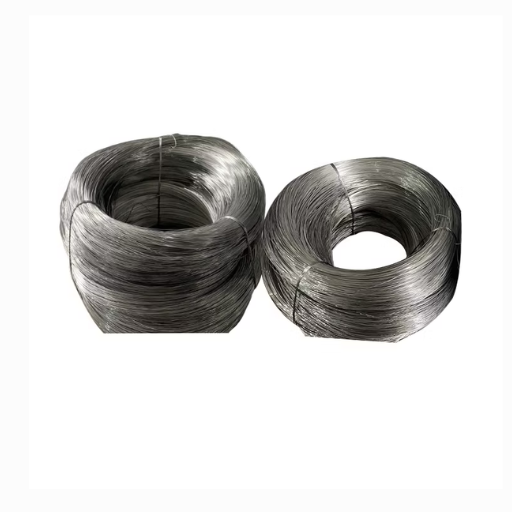
Stainless steel AISI 430 is cheaper than AISI 304 or 316 grade stainless steels. This is because it is a ferritic stainless steel, meaning it contains little to no nickel. Unlike 304 and 316, AISI 430 is not as resistant to corrosion, which makes it unsuitable for highly corrosive environments. It has better resistance to stress corrosion cracking compared to austenitic grades like 304, and has better thermal conductivity. However, AISI 430 has lower ductility, reduced weldability, and lesser ductility. AISI 430 can be used in kitchen appliances, automotive trim, and architectural components where its moderate level of corrosion resistance is useful. The reason AISI 430 can be used in these applications is because of its high chromium content, which provides good oxidation resistance.
AISI 430 vs. AISI 304: What’s the Difference?
While contrasting the AISI 430 and AISI 304 grades, their attributes and differences in composition stand out. AISI 304 is an austenitic stainless steel grade with excellent ductility and increased corrosion resistance, which makes it better for more flexible and weldable applications, albeit at a higher cost due to increased nickel content. AISI 430, ferritic stainless steel, is less expensive and has good oxidation and stress corrosion cracking resistance; however, it is less ductile and more difficult to weld. Each grade serves its purpose depending on the requirement, be it resistance to corrosion or cost efficiency.
Benefits and Drawbacks of Using 430 vs. 316 Stainless Steel
While comparing AISI 316 and AISI 430 stainless steel, I pay attention to the details because each of them serves a different purpose. AISI 316 has a superior corrosion resistance value because of its high molybdenum content, in the range of 2 to 3%, especially in chloride-rich environments. This makes it perfect for marine applications or persistent exposure to sharp chemicals. Its excellent weldability and flexibility further add to its versatility, but it comes at a higher cost, in part because of its nickel content (10-14%).
A little less known than AISI 316, AISI 430 stainless steel is an economical option due to its good resistance against oxidation, though its corrosion resistance is ranked as average. It has lower nickel content (<1%) and a mostly ferritic structure, so it sacrifices ductility and weldability but remains applicable for durable and cost-effective products like kitchen appliances, decorative trims, or even for some vehicles.
In essence, if I need high versatility and high resistance to rust, I go for 316. 430 is my go to for less demanding environments or tasks.
What are the Corrosion Resistance Properties of AISI 430?

Due to its chromium content which is approximately 16-18%, AISI 430 has moderately oxidation resistant properties and can withstand mildly acidic and mildly alkaline conditions. However, when compared to grade 316, AISI 430 is considerably less effective in marine, corrosive environments. With frequent maintenance, the corrosion resistance of AISI 430 with moderate exposure to moisture or aggressive chemicals can be greatly enhanced.
Factors Affecting Corrosion in AISI 430 Stainless Steel
- Exposure to the Environment:
Moisture Content: Water sitting on surfaces for long periods or prolonged exposure to high humidity can lead to deterioration.
Chemical Agents: Localized forms of corrosion such as pitting or crevice corrosion can be initiated by the presence of chlorides or strong acids, even in minor proportions, under localized conditions.
Temperature: Increased temperatures tend to increase oxidation and chemical reactions that take place, which are likely to lower the alloy’s resistance.
- Surface Condition:
Surface Finish: Rough or unpolished surfaces tend to be more amenable to corrode –כי because of greater adsorption of deposits.
Cleanliness: The protective oxide layer can be penetrated and, along with residual oil, dirt, or particulates that not only act but also serve as corrosion starting points.
- Heat Treatment and Grain Structure:
Misguided heat treatment may result in sensitizing conditions whereby chromium carbide precipitation occurs at the grain boundary, diminishing the material’s corrosion resistance.
Technical Parameters:
The Heat Treatment Temperature Range proportioned to corrosion-resistant properties: Maintaining an alloy at 1500–1550°F (815–845°C) is termed optimal.
Carbide precipitation is at risk post-rapid quenching treatment, so rapid quenching is ideal.
- Chromium Content:
To ensure the formation of the oxide layer crucial for corrosion resistance, chromium content should lie within 16-18%.
- Galvanic Coupling:
- Accelerated galvanic corrosion in the presence of an electrolyte occur when there is contact with more noble metals or other alloys, which can result in the joining of dissimilar metals.
Controlling these factors, along with strengthening the components, leads to optimum corrosion resistance and electrical conductivity, therefore extending the life of AISI 430 stainless steel for various purposes.
Comparing the Corrosion Resistance of 430 and Other Grades
Comparing AISI 430 stainless steel to other grades demonstrates that its usable corrosion resistance is dependable, though somewhat inferior to those with higher nickel or chromium concentration. The ferritic 430 grade has moderate corrosion resistance owing to its chromium content of 16-18%, but, unlike the austenitic 304 and 316 grades, it does not have nickel, which assists in countering extremely corrosive environments. Grade 304 contains nickel in the range of 8-10.5% in addition to chromium, which improves general corrosion resistance. Grade 316 contains an additional 2-3% of molybdenum, which improves resistance to pitting and crevice corrosion in chloride-rich environments.
Key technical points to evaluate:
- AISI 430:
- Chromium: 16-18%
- Nickel: 0%
- Molybdenum: 0%
- Uses: Kitchens, decorations, and indoor structures.
- AISI 304:
- Chromium: 18-20%
- Nickel: 8-10.5%
- Molybdenum: 0%
- Uses: Chemical tanks and food processing equipment.
- AISI 316:
- Chromium: 16-18%
- Nickel: 10-14%
- Molybdenum: 2-3%
- Uses: Structures for marine, high salinity, and pharmaceutical environments.
In conclusion, AISI 430 is able to endure far less aggressive environments than 304 and 316, making them the preferred stronger materials due to their durability under harsh conditions.
How is AISI 430 Stainless Steel Wire Manufactured?

The production process of AISI 430 Stainless Steel Wire begins with the fusion of the various raw materials, which is done in an electric arc furnace. This is done to achieve the specified chemical composition, which is further hot-rolled into rods or billets after being cast into them. Thereafter, attention is given to preserving the required mechanical properties while the wire is cold-drawn or hot-rolled into shape. Polishing, heat treatment, pickling, and surface treatment are performed at the end to enhance the corrosion resistance and aesthetic value of the wire, thus making it ideal for application in various industries.
The Fabrication Process of AISI 430
As I summarised, the steps AISI 430 stainless steel fabrication involves are many, from refining and melting it in an electric arc furnace to achieve the desired chemical composition. Then the material is turned into rods that are further processed into wire shapes using hot rolling or cold drawing while striking a balance with the mechanical properties and required standards. As a final stage, a heat treatment, surfacing, and pickling are done to ensure there is a smooth surface and further increase corrosion resistance and finish. The entire process makes the stamped AISI 430 super reliable, durable, and versatile across many industries.
Importance of Quality Control in Manufacturing
Every product manufactured must meet required standards and specifications; hence, quality control in manufacturing is pivotal. In my opinion, it prevents defects and enhances the efficacy of operations while cutting down wastage. Without question, proper quality control protects against loss of customer faith, non-adherence to laws, and variance in outcomes. Overall, with robust quality control mechanisms, customer satisfaction and success in the market can be attained easily, especially in cut-throat industries.
What are the Mechanical Properties of AISI 430?
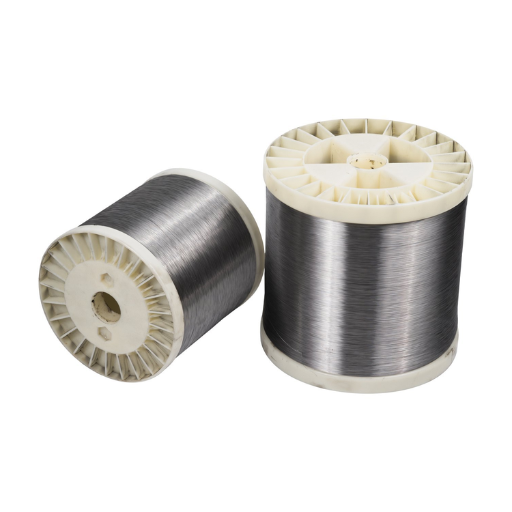
AISI 430 is a type of Ferritic stainless steel, which is known for its good mechanical properties. The material also has exceptional corrosion resistance. AISI 430 has the following tensile properties:
- Tensile Strength: 450 to 600 MPa
- Yield Strength: 275 MPa
- Hardness: 70 HRB (Rockwell B)
- Elongation at Break: 20% (minimum)
Due to these properties, AISI 430 is used widely in appliances such as ovens, and automotive parts including trims as well architectural components where high durability alongside corrosion resistance is required.
Understanding the Hardness and Durability
When assessing AISI 430, its moderate resistance to deformation can be credited to its approximate 70 Rockwell B hardness and AISI 430’s hardness and durability. Furthermore, it can stretch while still offering strength, which is due to the level of hardness. With regards to everyday uses such as kitchenware and automotive trims, AISI 430 falls within lower risk corrosive environments and extreme conditions, which is why it withstands good corrosion, making it durable and enhancing its longevity.
Impact of Heat Treatment on AISI 430
AISI 430 shows only a limited response to heat treatment because this ferritic stainless steel is not amenable to conventional heat treatment. Instead, annealing is preferred for stress relief to improve ductility and corrosion resistance. For AISI 430, a treatment temperature of about 1450 °F to 1500°F (790 °C to 815 °C) with air cooling is the rule. This makes it suitable for use in more demanding situations while preserving its magnetic characteristics and strength.
How to Properly Weld and Machine AISI 430 Stainless Steel?
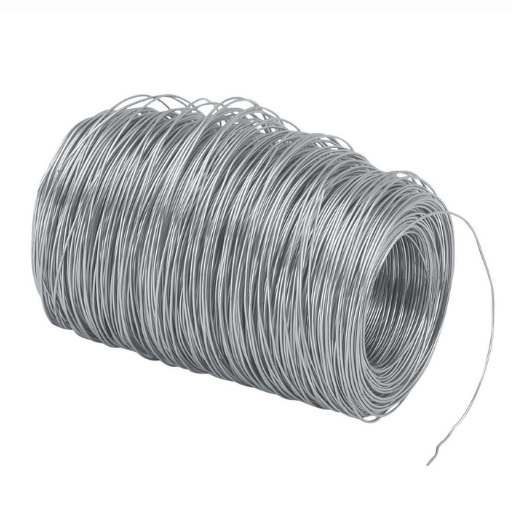
To weld AISI 430 stainless steel, one must follow precise welding procedures to prevent cracking while maintaining corrosion resistance. Striking arc below the steel’s melting temperature and using the correct filler material, like 308 or 309 stainless steel electrodes, can ensure good weldability. Preheating the part to 300°F (150 °C) can relieve some thermal stressing, and thermal strengthening will likely need to be done afterward so the ductility and corrosion resistance can be regained.
Machining AISI 430 Stainless Steel
The reasonable machining properties of AISI 430 stainless steel can be attributed to its renowned resistance to mechanical stress. Making use of sharp, high-grade tools made of carbide or high-speed steel mitigates edge chipping. Using coolant fluids during the machining operations greatly increases smoothness and prolongs tool life by preventing overheating. It is also important to optimize RPMs for maximum hardness performance to adjust feed rates to maintain efficiency.
Techniques forWelding 430 Stainless Steel
Welding 430 stainless steel is complicated because of its ferritic structure, which can lead to issues like grain growth and lowered ductility in the heat-affected zone (HAZ). Cleaning the weld area by removing surface contaminants or oils, along with oxides, is essential for defect-free weld joints. Additionally, for 430 stainless steel, the most common welding methods employed are TIG (GTAW) and MIG (GMAW) techniques, due to their capability in precise heating and minimal distortion.
For thinner sections, minimal preheating is recommended; however, from a thermal stress perspective preheating is generally not suggested. For lowering the chances of distortion and cracking, lower the heat to the bare minimum required. Post weld heating treatment is generally not required, however if so, the ductility can be restored post annealing. Optimum results can be achieved by using filler metals that contain chromium and are higher in content; employing set techniques assists in maintaining the corrosion resistance and mechanical properties of the material.
Best Practices for Machining AISI 430
Machining AISI 430 requires adherence to its moderate grade of machinability, which, when combined with the practices described below, guarantees success.
- Cutting Tools with Integrated Carbide Tips: Reliance on these tools derives from ease of use at higher speeds and extended tool life.
- Cutting Speed: Tools should maintain a cutting velocity range of 60 – 100 surface feet per minute (sfm) to harmonize wear and durability.
- Feed Rate: The recommended feed rate is within 0.004 – 0.012 inches per revolution (ipr), dictated by the intricacy of the individual procedure and tools employed.
- Coolant: Preferred oil-based coolant for AISI 430 is either chlorinated or sulfurized due to its superior heat retention and finishing capabilities.
- Depth of Cut: The Default is 5–15% more shallow than not to overshoot resource distortion and tool wear.
- Tool Geometry: Optimal forms include those with a positive rake angle.
Overall, balancing efficiency, tool wear, and quality finish requires adherence to the provided guidance and parameters.
References
- All About 430 Stainless Steel – Xometry
- AISI 430 Stainless Steel – Amardeep Steel
- What is 430 Stainless Steel? – SteelPro Group
Frequently Asked Questions (FAQ)
Q: What is AISI 430 stainless steel wire and its main composition?
A: AISI 430 stainless steel wire, also known as stainless steel grade 430 or UNS S43000, is a ferritic stainless steel known for its good corrosion resistance and formability. Its main composition includes chromium as the primary alloying element, which enhances its corrosion resistance and gives it a quality stainless steel finish.
Q: How does the annealing process affect AISI 430 stainless steel wire?
A: The annealing process softens AISI 430 stainless steel wire, enhancing its ductility and making it easier to form and shape. Annealed stainless steel wire is often preferred in applications where flexibility and formability are crucial. This process also helps relieve internal stresses and improves the wire’s mechanical properties.
Q: What are the specifications for AISI 430 stainless steel wire according to ASTM standards?
A: AISI 430 stainless steel wire is standardized under various ASTM specifications to ensure consistent quality and performance. These specifications outline the material’s chemical composition, mechanical properties, and dimensions. For instance, ASTM A580/A580M is commonly referenced for stainless steel wire specifications.
Q: How does AISI 430 stainless steel wire compare to austenitic stainless steels like AISI 316?
A: AISI 430 is a ferritic stainless steel, which means it has a higher chromium content and is magnetic, unlike austenitic stainless steels like AISI 316. While AISI 316 offers superior corrosion resistance, especially in harsh environments, AISI 430 provides good corrosion resistance at a more economical price and is more suitable for applications requiring magnetic properties.
Q: What are some common applications of AISI 430 stainless steel wire?
A: AISI 430 stainless steel wire is widely used in automotive, appliance manufacturing, and kitchenware due to its good corrosion resistance and formability. It is also used in the production of stainless steel soft wire and stainless steel spring wire, where flexibility and resilience are required.
Q: Can AISI 430 stainless steel wire be used in high-temperature applications?
A: While AISI 430 stainless steel wire has good resistance to oxidation up to approximately 870°C, it is not recommended for continuous use in temperatures above 800°C. For applications requiring higher temperature resistance, other grades of stainless steel may be more suitable.
Q: What are the benefits of using AISI 430 stainless steel wire in coil form?
A: Using AISI 430 stainless steel wire in coil form offers flexibility and ease of handling during manufacturing processes. Coils of stainless steel 430 provide an efficient way to store and transport the wire, ensuring that it remains in optimal condition until use. They are especially useful in automated production lines.
Q: Who are the leading suppliers of AISI 430 stainless steel wire?
A: Leading suppliers of AISI 430 stainless steel wire include companies like thyssenkrupp materials and other reputable steel manufacturers. These suppliers offer a range of stainless steel products that meet various international standards and specifications, ensuring high-quality materials for industrial use.
Q: Is AISI 430 stainless steel wire suitable for seamless applications?
A: AISI 430 stainless steel wire is not typically used for seamless applications that require high ductility and strength, as it is a ferritic stainless steel with limited ductility compared to austenitic grades. However, it is suitable for many other applications where its properties, such as corrosion resistance and formability, are advantageous.


